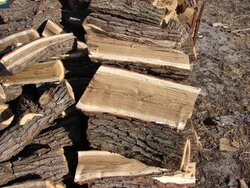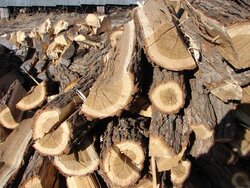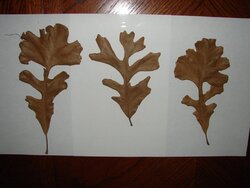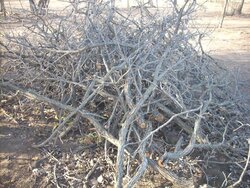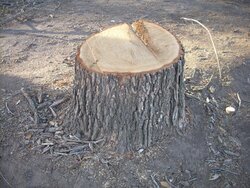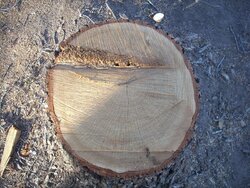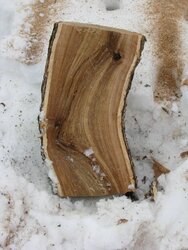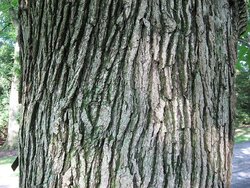Felled this tree thinking it is a white oak. The ground had been cleaned bare under it before I got to it so no acorns or leafs to confirm my thinking. So you know, those are maple splits stacked behind the wood in question in the second picture.
Verification of wood identification
- Thread starter wetwood
- Start date
-
Active since 1995, Hearth.com is THE place on the internet for free information and advice about wood stoves, pellet stoves and other energy saving equipment.
We strive to provide opinions, articles, discussions and history related to Hearth Products and in a more general sense, energy issues.
We promote the EFFICIENT, RESPONSIBLE, CLEAN and SAFE use of all fuels, whether renewable or fossil.
You are using an out of date browser. It may not display this or other websites correctly.
You should upgrade or use an alternative browser.
You should upgrade or use an alternative browser.
- Status
- Not open for further replies.
I
ISeeDeadBTUs
Guest
I
ISeeDeadBTUs
Guest
I'm thinkin' people are starting to post different pictures od the same wood in an attempt to see if posters will id the same wood two different ways!! :coolsmirk:
https://www.hearth.com/econtent/index.php/forums/viewthread/51333/
https://www.hearth.com/econtent/index.php/forums/viewthread/51333/
Wood Duck
Minister of Fire
The wood looks like oak to me, the bark suggests Chestnut Oak. The bark seems too furrowed for White Oak. As for verification, don't count on us to verify anything. We can give opinions, and if enough of us agree that might give you some confidence in our guess, but you'll never really verify anything. That's OK, I think, because we are all sure it is firewood and will burn just fine after it sits a while.
Wood Duck
Minister of Fire
I just noticed that you are in Kansas, so i think I'll change my ID to Bur Oak, aka Mossycup Oak. I haven't seen that many Bur Oaks, since they aren't a common tree here in PA, but the ones I have seen had furrowed bark like your wood has, and I think Bur oak is a common tree on the prairie.
I
ISeeDeadBTUs
Guest
Ok, WW, the point I was making is that your wood looks like the wood in the other post.
I cut a lot of Chestnut Oak here, Though the bark looks similar, the color makes me think it's not. I am POSITIVE it is NOT white Oak. Huge difference in White vs Chestnut Oak bark. If you are sure it's Oak, then maybe it's a variety that we don't see so much of here on the right coast.
Are ya sure it's not Locust??
I cut a lot of Chestnut Oak here, Though the bark looks similar, the color makes me think it's not. I am POSITIVE it is NOT white Oak. Huge difference in White vs Chestnut Oak bark. If you are sure it's Oak, then maybe it's a variety that we don't see so much of here on the right coast.
Are ya sure it's not Locust??
RAY_PA
Feeling the Heat
Battenkiller
Minister of Fire
ISeeDeadBTUs said:Ok, WW, the point I was making is that your wood looks like the wood in the other post. Are ya sure it's not Locust??
Doesn't look a thing like locust to me, nor does it look at all like the other post's photos:
- Bark is all wrong
- Color is all wrong
- Way too much sapwood to be locust
- grain isn't right (although the heartwood end grain could be close)
Looks like some sort of oak, but not one I've seen before. Definitely not white oak, that I'll agree on.
Looks like oak to me, as for which one I have no clue.
It always seems to me that the same species of tree's in different areas can tend to look different. Along with the difference due to the age of the tree you'll get 10 responses with 10 different answers. Where is Lee!?
It always seems to me that the same species of tree's in different areas can tend to look different. Along with the difference due to the age of the tree you'll get 10 responses with 10 different answers. Where is Lee!?
I
ISeeDeadBTUs
Guest
Looks like there's a consensus here WW. . .it's NOT White Oak! ;-)
So sense none of us have any better idea, how bout you post a pic of the leaves?? Or at least tell us whether they're simple or compound?
So sense none of us have any better idea, how bout you post a pic of the leaves?? Or at least tell us whether they're simple or compound?
3fordasho
Minister of Fire
Hmm, I've got a lot of wood here that looks identical and it's oak. Not red oak, some variation of white. Leaves were the very rounded tipped typical of white or swamp oak. Pointed tips=red varieties, rounded tipped=white varieties.
Well, if it is a Chestnut oak, I find their leaves very distinctive among the oaks around here.
http://www.duke.edu/~cwcook/trees/qumu60715.jpg
http://www.duke.edu/~cwcook/trees/qumu60715.jpg
I went back and found some leafs then took pics of the stump and branches. It may not be a white oak but I'm fairly sure it is some kind of oak. Oak are not prevalent in these parts, nor have I ever cut one down before. With the new pics someone may have a better idea of what it is but whatever it is it will burn well after it has seasoned.
isdbtus, I understand. lol
isdbtus, I understand. lol
Attachments
smokinj
Minister of Fire
From: http://www.kansasforests.org/conservation/deciduous/buroak.shtml
Quercus marcocarpa, or Bur oak (photo), is native to the eastern two-thirds of Kansas. Bur oak is one of the most widely distributed deciduous hardwood trees in Kansas. It is one of our largest and longest-lived hardwood trees reaching a mature height of 50 to 80 feet and a crown spread of 40 to 60 feet. It has a massive trunk, short branches and a large, round crown. It is commonly considered slow growing, however, on a fertile site with adequate moisture, after a couple of years establishing its roots, it can grow two to three feet a year.
Leaves, Stems, and Fruit
The leaves (photo) are simple and alternately arranged on the twigs. They are 6 to 10 inches long and 4 to 5 inches wide with the broadest portion toward the outer end of the leaf. Usually, there are 5 to 9 lobes separated by deep indentations with the top surface being darker green than the underside. Young twigs are light brown and smooth but corky ridges often develop after the second year. Flowers appear in April or May with both male and female flowers borne on the same tree. Fruit is a large, nearly round acorn enclosed 1/2 or more by a large fringed cup. The bark of older trees is dark with deep vertical furrows.
http://www.kansasforests.org/conservation/deciduous/images/buroakleaf.jpg
Quercus marcocarpa, or Bur oak (photo), is native to the eastern two-thirds of Kansas. Bur oak is one of the most widely distributed deciduous hardwood trees in Kansas. It is one of our largest and longest-lived hardwood trees reaching a mature height of 50 to 80 feet and a crown spread of 40 to 60 feet. It has a massive trunk, short branches and a large, round crown. It is commonly considered slow growing, however, on a fertile site with adequate moisture, after a couple of years establishing its roots, it can grow two to three feet a year.
Leaves, Stems, and Fruit
The leaves (photo) are simple and alternately arranged on the twigs. They are 6 to 10 inches long and 4 to 5 inches wide with the broadest portion toward the outer end of the leaf. Usually, there are 5 to 9 lobes separated by deep indentations with the top surface being darker green than the underside. Young twigs are light brown and smooth but corky ridges often develop after the second year. Flowers appear in April or May with both male and female flowers borne on the same tree. Fruit is a large, nearly round acorn enclosed 1/2 or more by a large fringed cup. The bark of older trees is dark with deep vertical furrows.
http://www.kansasforests.org/conservation/deciduous/images/buroakleaf.jpg
Battenkiller
Minister of Fire
Interesting. So it is a white oak, just not the quercus alba I'm familiar with. Apparently, the bur oak can hybridize with white oak to make matters even more confusing:
http://en.wikipedia.org/wiki/Bur_oak
Here's a photo of bur oak bark:
Bur Oak is sometimes confused with Overcup oak and White oak, both of which it occasionally hybridizes with.
http://en.wikipedia.org/wiki/Bur_oak
Here's a photo of bur oak bark:
Attachments
Tony H
Minister of Fire
I would have to say Bur Oak looks just like the ones I have in the yard. Good stuff takes 12 -18 months to dry
- Status
- Not open for further replies.
Similar threads
- Replies
- 19
- Views
- 2K
- Replies
- 17
- Views
- 1K


